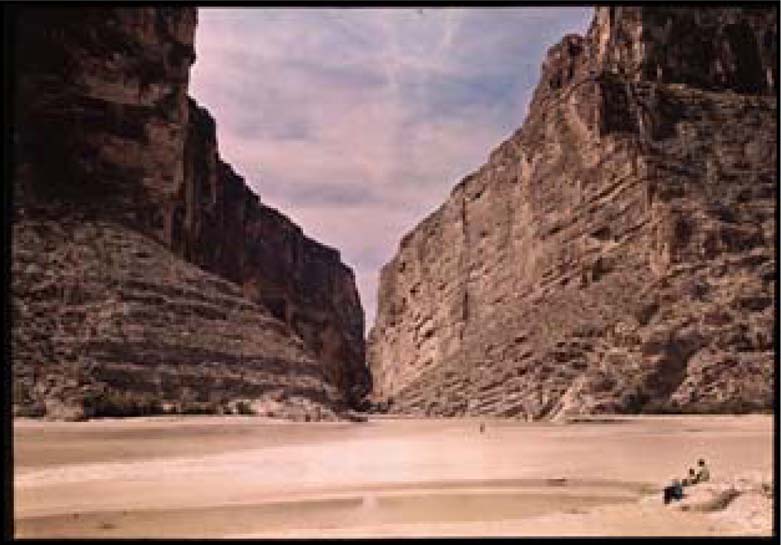
Topics in Photographic Preservation 2003, Volume 10, Article 14 (pp. 132-138)
Presented at the 2003 AIC Meeting in Arlington, Virginia PMG/EMG Joint Session, June 8, 2003
In November 2002 I received a report from the Image Collection about an unpublished color glass plate they had been refiling. It had been to the lab to be scanned for publication, but appeared to a staffer to have been light-faded since the scan. In the scan the image is beautiful:

but the original itself, a 5” × 7” Dufaycolor transparency from 1938 sandwiched in glass, had a big purple stain (just visible in this black and white reproduction):
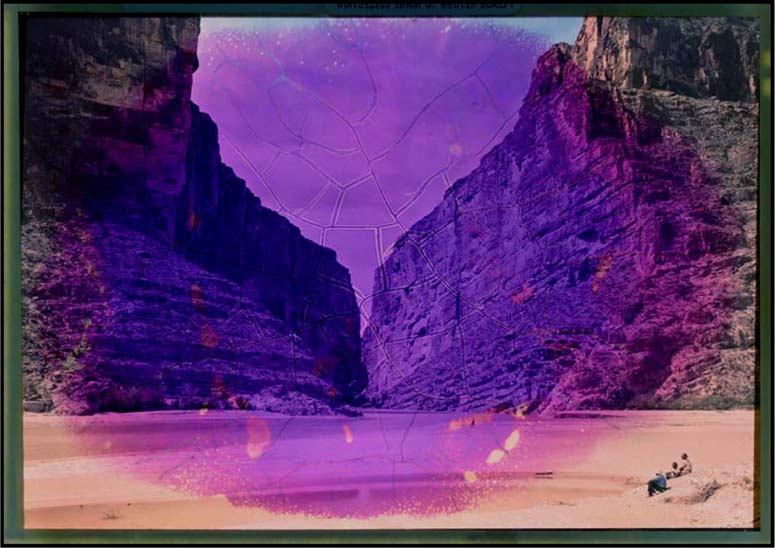
The surface of the plate was channeled on the emulsion side, visible in glancing light:
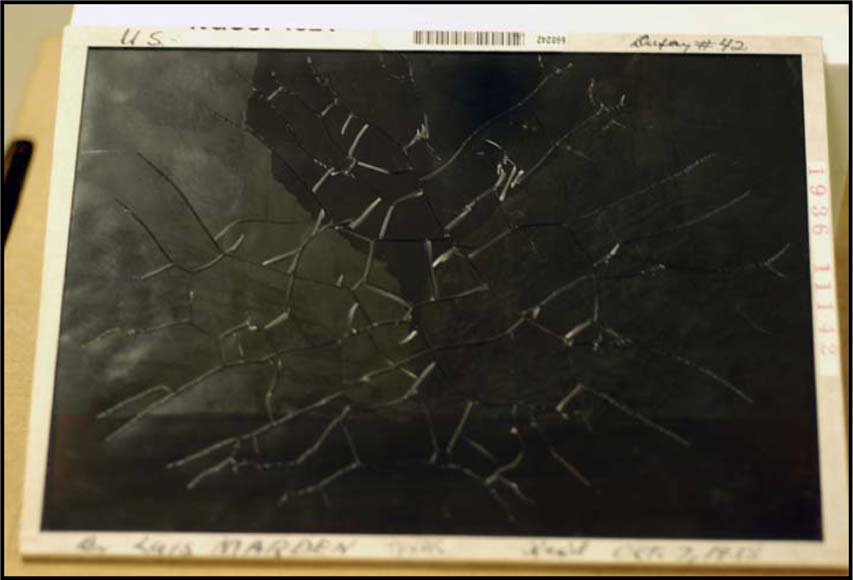
I knew that this was not light fading, but rather the effects of “vinegar syndrome,” the deterioration of cellulose acetate film. For at least 25 years we have observed cellulose acetate deterioration in our black and white negative collection, and so we had seen thousands of examples. We had first observed it in our color collection during a 1981 survey, although we did not identify it until David Horvath's research was presented to the AICPMG Winter Meeting and published in Topics in Photographic Preservation, Volume One, in 1986.
Never before, however, had I heard of vinegar syndrome coming on so quickly or to such a degree. I posted a query to the Conservation Distlist, but although several conservators expressed an interest in my findings, no one replied to say they had ever seen it.
My first instinct was that this plate had been left on a light table during the proofing stage and the heat of the light table had catalyzed the process by causing gas fumes to build up in the microclimate created by the glass plates encasing the Dufay film. But in the course of this investigation, it became clear that the sudden degradation of the material had come as a result of the scan itself.
First introduced as cine film in 1932, Dufaycolor film was produced for still cameras in 1935 (marketed by Ilford Inc.). It was an additive color process on a heavy cellulose acetate filmbase. Dufaycolor still film followed an earlier process, the Dufay Dioptichrome, in which the emulsion and dyes were adhered directly to glass.
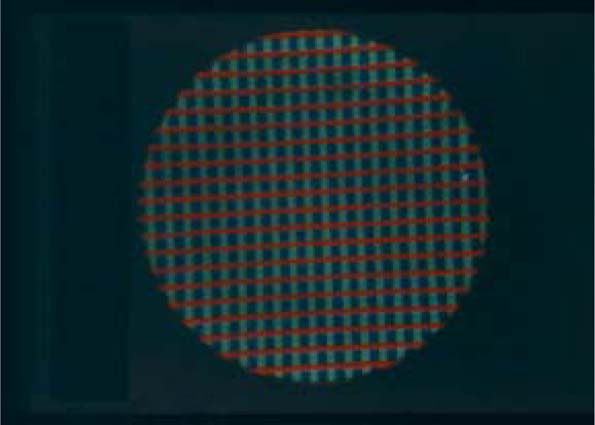
The filmbase of the Dufaycolor was coated with a very fine, regular screen of red, blue and green lines. On top of the dyes was a silver emulsion. On exposure through the dyes, each of the colored dots would allow light of that color to fall upon and expose a single dot of the silver emulsion. After exposure and processing, the silver in the emulsion would selectively cover each colored dot to create a color image.
Dufaycolor was in use through the 1950s, but National Geographic had stopped using it by 1940 in favor of the faster, more compact 35mm subtractive process from Kodak. In around 1950, 11,000 glass plates that hadn't been published were crated up and shipped to an un-air-conditioned warehouse in Washington, D.C., where they stayed until 1980 when they were returned to NGS offices to be surveyed.
Because of the long warehousing of the plates, the earliest cases of what we now know to be cellulose acetate degradation in additive color plates were noted in 1981, but the degradation probably predated that year considerably. In 1981 it was seen in 53 of the 1186 Dufays during a condition survey of over 11,000 unpublished additive color plates. The cause was unknown at that time. When observed, the visible signs were described as “blue”, “reticulated”, “emulsion cracked”, “blisters in silver”, “processing faults”, and “filmbase self-destruction”.
During our 2003 survey, vinegar syndrome was seen in 768 of 1141 Dufaycolor plates, including 29% of the plates exposed in 1936, 62% of the 1937 plates, and 83% of the 1938 plates. (There were only 14 Dufays in the collection outside of these three years. They were from one coverage in 1939, and all appeared to be in good condition. In addition, 45 Dufays that had been in an advanced state of acetate deterioration in 1981 could not be located.)
Plates have been scanned and duplicated on film for this project. The four types of reproduction employed were:
(1) A Nikon 90S with Bencher light fixtures equipped with three 25-watt tungsten bulbs and one Kemlite DXB flash tube (one fixture below for photographs in transmitted light, two above to produce glancing light), and 35mm Kodachrome 200 film;
(2) A Fuji FineScan 5000 Flatbed Scanner;
(3) A Hewlett Packard Scanjet 7400c; and
(3) A Digital Nikon D100 with a small Macbeth light table.
The coverage from which the damaged plate had come, a 1938 Texas assignment, was examined carefully. Damage was noted in all 56 unpublished plates that had been stored together over the decades. Interestingly, the plates in the worst condition were some of the best and most interesting images, confirming my theory that light exposure sped up the damage. But six plates from the same Texas series, but which were published soon after being shot, were all in fine condition. These plates had been stored in the “Published” files in the library, in air-conditioned offices since the advent of air-conditioning. Since 1996 all the plates have been stored at 65°.
Subsequently, all 1141 unpublished Dufays were examined (along with some 330 non-Dufay vintage color transparencies of mixed manufacture). Plates were categorized in an array similar to that designed by David Horvath for the negatives:

Although much of the damage was hard to categorize, it was immediately apparent that most of the damage we were seeing had not been seen during the 1981 survey, which was the most immediate factor for us to face. That is, in addition to the plates that were deteriorating nearly before our eyes out of file, in just over 20 years over half of the collection had begun to display a distinct amount of deterioration while in file in our air-conditioned offices.
I removed several of the unpublished plates that exhibited damage to photograph them in preparation for a light table test. I wanted to see how much exposure it would take to generate further damage. I also selected a few that showed no damage in case I should decide it was justified to test them as well.
Because I had found Kodachrome to be a superior means of copying early color for presentation, I used Kodachrome 200, the only type still stocked (barely) at National Geographic. I copied the plates on a traditional copy stand. A week later the film returned from Kodak and the results were good. The damage was clear and the reproductions were excellent. I proceeded to mark the mounts with ID numbers by comparing them with the originals.
A pair of slides made of one plate appear here:
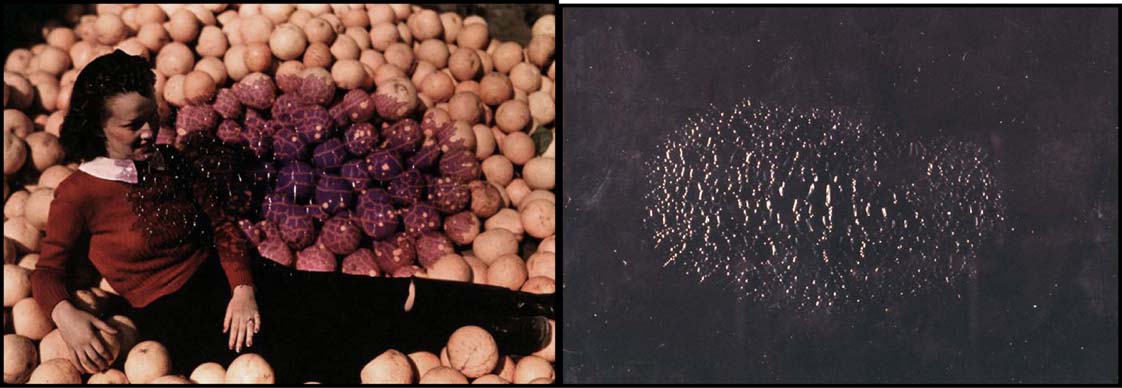
When I pulled out the original of this image, I was surprised to see that the damaged area seemed to have enlarged just in the week since the slides were taken. What I saw (illustrated here in a 100MB scan made three weeks after the above slides, with different copying characteristics, and a slide made in glancing light taken another week later with the digital camera) looked like this:
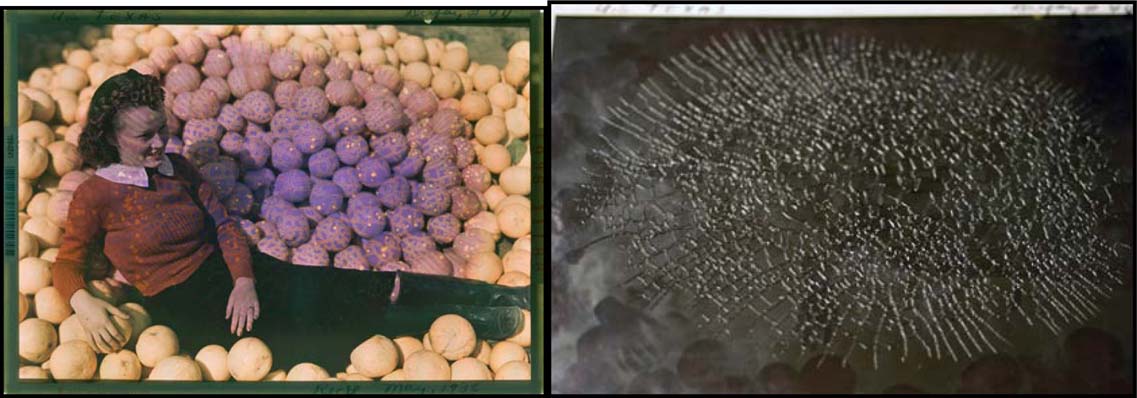
and one month later, it looked like this (scanned on the office HP Scanner):
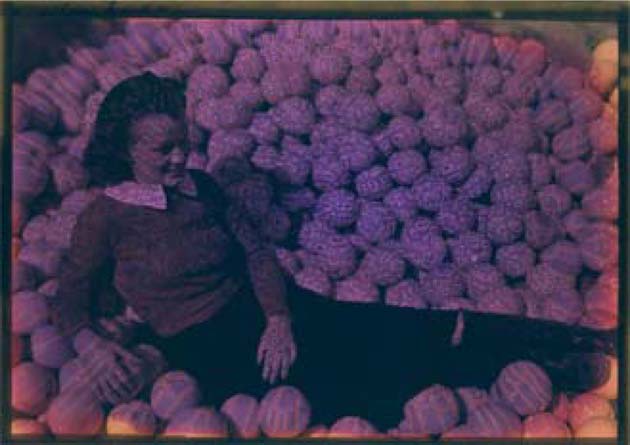
This plate had not been on a light table since I had pulled it from file. It's only exposure to light had been a few short strobe flashes on the copy stand in the making of the Kodachrome slides. And yet, it the intervening weeks, during which it was stored in the dark in cool storage, the size of the effected area had nearly doubled. A month after the hi-res scan, the damage covered the whole plate.
This was the case with every one of the damaged plates I had photographed. All had visibly worsened in condition as a result of having been photographed on the copy stand. In addition, certain plates that had not been copied on Kodachrome were scanned at high resolution, and the scanning produced comparable increases in the visible deterioration.
Plates that had not shown visible damage when they were removed from file were not as greatly effected by the exposures. Of four such plates scanned, only one later showed visible signs of cellulose degradation, and it was one that had been exposed some ten times on the copy stand, had a 100MB scan, and was photographed on a light table.
I also pulled one damaged Dufay that had been published in National Geographic magazine in 1998 and that now showed the signs of vinegar syndrome. I removed it from the glass and ordered a scan. The damaged area on that Dufay also more than doubled in size as a result of the scan. (I should emphasize that this plate had been stored with the other unpublished plates until 1998.)
The discoloration appears to be a result of dissolved dyes or a related chemical change caused by the gasses given off by the deteriorated cellulose acetate. Certain areas retain the natural color and the original dyed grid longer than other areas, mostly in the delaminated channels.

I have only examined a sampling of the published plates (that have been stored in offices and air conditioning since the 1930s), and they appear to be in very good condition. I will be surveying this small collection later this year. If it is true that there is a threshold in the progress of cellulose degradation, as it appears to be, then that threshold seems to have been reached by our unpublished plates as a result of the poor conditions in which they were housed for 30 years.
I believe that to extend the life of all the Dufay images it is essential to place them in cold storage, and it is probably desirable to remove them from the glass. This is probably true of all filmbase color of that period. Somewhat problematic is the fact that once out of the glass support, these transparencies immediately begin to lose their flatness. Planar distortion can be so extreme within minutes that duplication by any means becomes difficult or impossible.
Therefore we have decided to make high-resolution scans of all our Dufays that still have usable images while they are still in the glass, then remove them from the glass and store them in cold storage conditions. It happens that we are soon to open up a large portion of our negative storage room due to a move, and we have determined that this space, kept at around 40 degrees and 40%, will be the best space we have available. It also permits us to store our two most volatile collections together: black and white negatives suffering from cellulose acetate deterioration, and color transparencies suffering from the same.
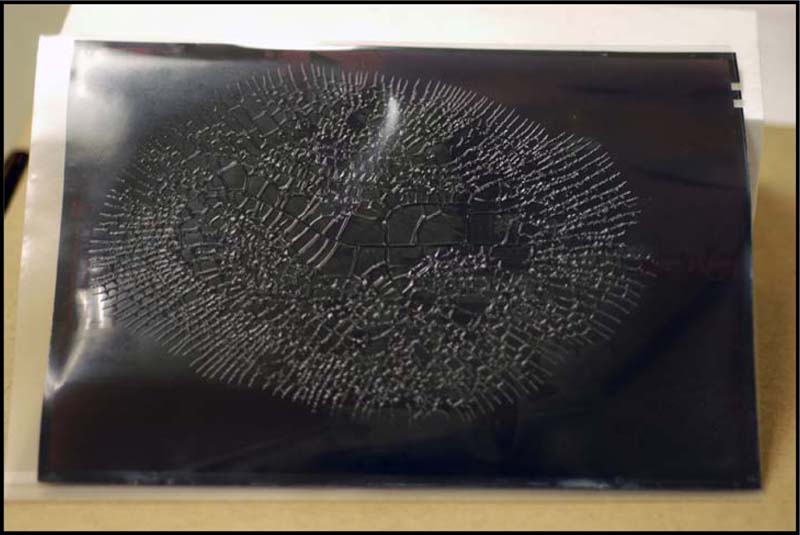
Luis Marden, original images
B. Anthony Stewart, original images
Robin Siegel, film and digital camera duplication (color for these photos available on request in 2003)
Andrew Jaecks, high resolution scans
Johnson, G. L. Photography in Colours. E.P. Dutton & Co., 1917.
Fanstone, Robert M. Colour Photography, 2nd Edition. Henry Greenwood and Co., Ltd. 1935.
Coe, Brian. Colour Photography. Ash and Grant, 1978. Further information on Dufay products, and the cine film in particular, is available at www.bftv.ac.uk/projects/dufaycolor.htm, www.craigcamera.com/lit_color.htm, www.screensound.gov.au
ROBIN SIEGEL
NATIONAL GEOGRAPHIC SOCIETY
Papers Presented in Topics in Photographic Preservation, Volume Ten have not undergone a formal process of peer review.